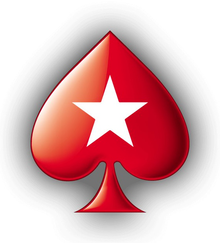Translated with the help of AI. We apologize for any errors and would appreciate your help in correcting them.
Translated by order of the educational portal university.poker
Article author: PokerStars Learn, original source: PokerStars Learn
I recently discussed two tournament giveaways; one in person and one on one Discord channel.
In both cases, very similar situations arose: our hero had a strong enough, but not a nut hand, and he had to decide whether to call all-in. In both cases, I had neither reeds for the opponent, nor other information that could help in making a decision.
In one of the hands, I said that I would pay for the raise, and in the other that I would to call. Why so?
The main deciding factor for me was the size of our stack. In the hand, in which I would equalize, we had only 12 big blinds (bb) after the turn bet. And in the hand, where I leaned towards the fold, we had 35 bb left after the counter-bet on the flop. All else being equal, the difference here is the size of our remaining stack if we default. The presence of a relatively large stack leaves us the opportunity to perform a variety of actions and fight for pots, without bringing the situation to the point where we find ourselves in the push-fold stage or face a solution to the entire stack in the course of distribution.
Also, the size of the stack affects which tools from our arsenal we can effectively use during the draw. The more chips we have, the more opportunities we have.
- Let's start with a very simple example to illustrate this. You are on the small blind, and on the pre-flop everyone before you has passed. At the same time, your stack size is 5 bb. There is little sense to such a stack: you can defold, call (we will not discuss this action now, but it is possible), or go all-in.
If you scare, you can sometimes get a big blind to fold without a fight, albeit only in a small number of cases. It's not much, but at least something. If, however, your stack at the beginning of the hand was only 1 bb, then you have a very narrow choice: to default or call, and you can never force the player from the big blind to surrender without a fight, you just have to hope for a showdown victory (opening). Now that you understand what stack capabilities are, let's talk about game concepts with different stacks so that you are ready to make decisions with this in mind much faster and easier.
1. 5 BB
At this stack depth, we have few options. We can scare in some situations if everything is falling apart in front of us, but the shorter our stack, the less likely it is that everyone after us will throw it away. If someone has already opened before us, then the expected value that he will drop on our all-in is minimal. It is better to go to all-in first: this is really all that can be done here, apart from the hope of winning the showdown.
2. 15 BB
Now, firstly, we have not only fold equity from our open-raise, but also fold equity from 3bet. If the player in front of us makes a raise of 2.5 bb, and we re-raise all-in 15 blinds, then in some cases we will simply take the pot on preflop, increasing our stack by the size of blinds and ante, as well as 2.5 bb from open raise.
This is a great opportunity with a similar stack, which allows us to vary some bluff-pushes with our velly arms to strengthen our position.

3. 25 BB
In such a stack, we have another additional tool - 4-Bet fold equity.
- For example, we open up to 2.5x, and player 3-betts us up to 7x. 4-bet all-in in 25 bb has a tangible fold equity and will undoubtedly make all weak hands from the range of 3bet of the opponent just immediately deflate. This can even cause a player who has not looked at your stack in advance and has bet you with AJ or 99 to fold. In addition, now there is a little space for maneuvers on the post-flop, but not so much yet.
4. 35 BB
Now we have not only sufficient stack depth for various preflop actions, but also an expanded set of tools for postflop. Things like semi-bluff raises on the flop gain much more weight as we now have enough chips to maneuver further down the streets.
- For example, we can comfortably float on the flop. Let's say the player opens up to 2.5x, we call on the button, and the blinds fold. On the flop, the opponent makes a c-bet of 3bb, and we call again. Now we go to the turn in the position with a stack of 29.5 bb and 12.5-13.5 bb in the pot (depending on the ante). If he continues to barrel on the 5 bb turn, we can float him a second time if we want, which will give about 23 bb in the pot and 24.5 bb in the stack.
You can come up with another scenario: on the flop, he counterbet 3bb, and we make a raise to 8bb, and now he is without a position, and we still have as much as 24.5bb on the stack, with which we can continue to bet on the following streets if the opponent does not immediately throw it away. Now we have a lot of options available, so this stack has a good effective value.
5. 45 BB
Here we will have even more useful opportunities. The horizons are widening greatly and our toolkit is wide open for further work! We can use double floating, bluff raises on the turn, reraise wars on the pre-flop, various ways to play post-flop on the turn and river and much more. This is very different from the situation when we are short, and the whole game ends on the preflop or on the flop.
6. Conclusion
So, back to the 2 hands that I talked about at the beginning, and which pushed me to write this article.
The stack of 12 big blinds is not really very valuable, so if we equalize all-in and lose, it will be bad (because we will be relegated from the tournament), but it is not a disaster. 12 bb is not much to protect because there is not much we can do with them. However, the 35 big blinds have enough value and we should be more careful about putting them in danger. If the tournament is not particularly important to us, it is obviously easier for us to risk everything, but in important tournaments it is undesirable to call and lose the stack of 35 bb, which would be very useful in the future.
Also note that if we call and win, say, 80 or 90 bb, this will not affect the value of the stack as much as its complete loss. In a similar situation, the chips lost when losing are much more valuable than the chips gained when winning. With 35 bb, we have a lot to work with, so making marginal pushes or taking unnecessary risks with so many chips does not make much sense. While with a stack of 12 bb, where the possibilities are much more modest, the risk will certainly be more justified.
Be aware of the value of your stack and when making important decisions at the table, think about how this will affect the value of your stack in the future if you lose or win a hand. If you lose, it will cause a decent stack that has a lot of value to drop to a size that has little to no value.
It is usually wiser to take risks only in highly positive situations and take a little more care of your stack. Most of the time, playing in tournaments, you will not face such serious decisions. However, when you find yourself in such a situation, remember these ideas and apply them in the game. It is such moments that can affect whether there will be a dipran in the tournament or an early departure bust




